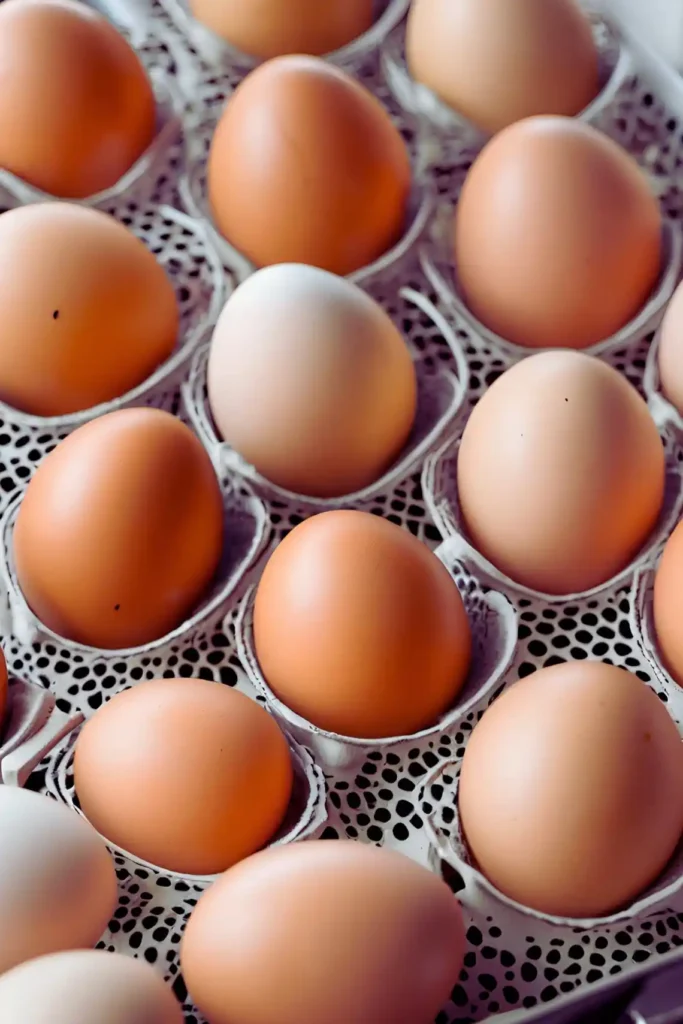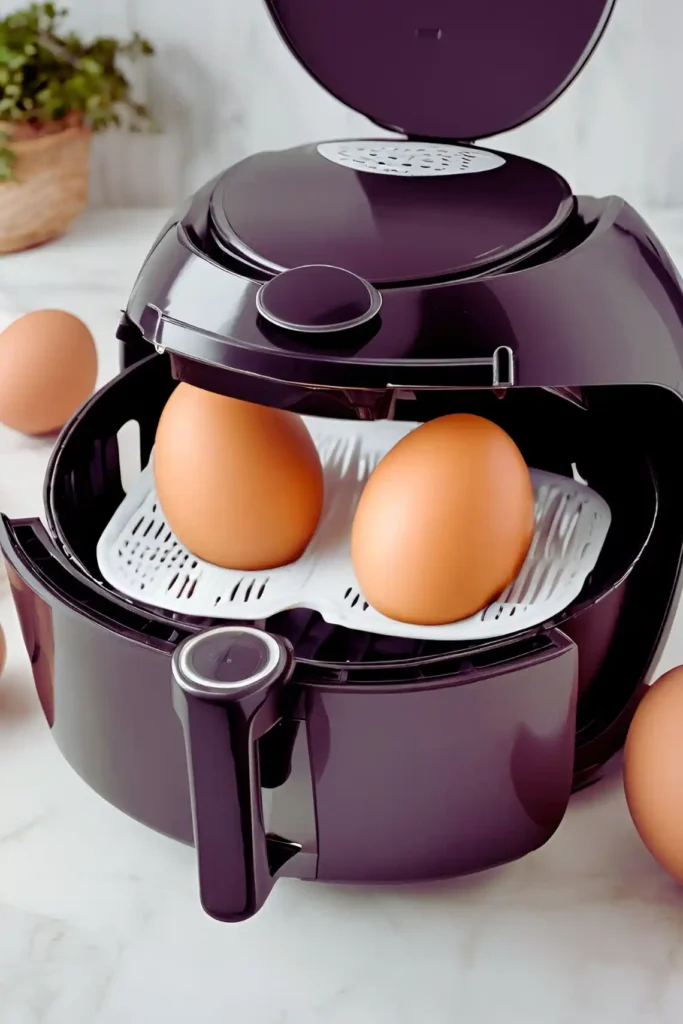Eggs are a breakfast staple, loved for their versatility and nutritional benefits. With the growing popularity of air fryers, many wonder: Can you air fry eggs at 400 degrees? This article explores the nuances of air frying eggs, from techniques and temperatures to recipes and safety considerations.
What Is Air Frying ?
Air frying is a modern cooking technique that uses hot air circulation to cook food quickly and evenly. It’s often touted as a healthier alternative to deep frying, delivering crispy results without excessive oil. This method has revolutionized how people approach traditional cooking.

- How it works: Hot air rapidly circulates around the food, creating a convection effect.
- Benefits: Faster cooking times, less oil, and easy cleanup.
Why Consider Air Frying Eggs?
Eggs, a cornerstone of many diets, can be prepared in numerous ways—boiled, scrambled, fried, or baked. Air frying eggs is an innovative approach, offering:
- Convenience: Minimal effort and cleanup.
- Variety: Options for cooking whole eggs, scrambled eggs, or even egg muffins.
- Efficiency: Perfect for busy mornings or meal prepping.
Benefits of Air Frying Over Traditional Cooking Methods
Air frying eggs has distinct advantages over conventional methods like stovetop frying or oven baking:
- Healthier results: Reduced need for oil minimizes fat content.
- Uniform cooking: The consistent heat distribution ensures even cooking.
- Versatility: Ideal for creating a variety of egg dishes, from hard-boiled to soufflé-style egg cups.
Understanding Egg Cooking Temperatures
How Heat Affects Eggs
Eggs are sensitive to heat, and their texture changes significantly based on cooking temperature. Proteins in the egg whites and yolks coagulate at different rates:
- Egg whites: Begin setting at 140°F (60°C) and fully set around 180°F (82°C).
- Egg yolks: Begin to thicken at 149°F (65°C) and set at 158°F (70°C).
Ideal Temperatures for Cooking Eggs
For best results, eggs should be cooked within a temperature range that preserves their texture:
- Scrambled eggs: Low-medium heat for creamy results.
- Hard-boiled eggs: Medium heat to avoid rubbery whites.
- Air frying: A controlled temperature (like 300°F–400°F) works well.
Can You Use 400 Degrees for Eggs?
What Happens to Eggs at High Temperatures?
Cooking eggs at high temperatures, like 400°F, can be tricky:
- Benefits: Quick cooking time, perfect for meal prepping.
- Risks: Overcooking can lead to dry, rubbery eggs or cause yolks to become powdery.
Is 400 Degrees Too Hot for Eggs?
While 400°F is not inherently too hot, it requires careful timing:
- Whole eggs: Suitable for creating “air-fried boiled eggs.”
- Scrambled eggs: Short cooking time to avoid drying out.
- Egg cups: Ideal for a quick bake, especially when combined with veggies or cheese.
Types of Eggs for Air Frying
Whole Eggs
Whole eggs can be “boiled” in the air fryer without water. Simply place eggs in the basket and cook at 300°F–400°F:
- Soft yolks: 9–10 minutes.
- Hard yolks: 12–14 minutes.
Scrambled Eggs
Scrambled eggs are perfect for quick, fluffy results:
- Use a heatproof dish or silicone molds.
- Add butter or milk for creaminess.
- Cook at 350°F for 5–8 minutes, stirring occasionally.
Egg Cups or Muffins
Egg muffins are a versatile option for meal prep:
- Combine eggs with vegetables, cheese, or meats.
- Pour the mixture into silicone molds.
- Cook at 375°F–400°F for 10–12 minutes.
Necessary Equipment
Choosing the Right Air Fryer
Not all air fryers are created equal. For best results with eggs:
- Basket-style air fryers: Ideal for whole eggs or egg cups.
- Oven-style air fryers: Offer more space for larger batches or dishes.
Additional Tools for Egg Preparation
Enhance your air-frying experience with these tools:
- Silicone egg molds: Prevent sticking and ensure even cooking.
- Heatproof dishes: Perfect for scrambling eggs.
- Tongs or spatulas: For safe handling of hot eggs.
Precautions When Air Frying Eggs
Avoiding Overcooking
Eggs are delicate, and overcooking is a common pitfall:
- Monitor cooking times closely.
- Use a thermometer to check internal temperatures.
Ensuring Even Cooking
For consistent results:
- Preheat your air fryer to ensure even heat distribution.
- Arrange eggs or dishes evenly in the fryer basket or tray.
Step-by-Step Guide to Air Frying Eggs
Preparing the Air Fryer
Proper preparation is essential to ensure your eggs cook evenly and without sticking.
- Preheat the air fryer: Most models require 2–3 minutes to reach 400°F. Preheating ensures consistent results.
- Apply non-stick spray: Use a light coating of oil or a silicone liner to prevent eggs from sticking.
- Arrange eggs carefully: Place them in a single layer or use heatproof molds for scrambled eggs and egg cups.
Selecting the Right Egg Type
Air frying offers flexibility, but the type of egg dish you prepare impacts the cooking process:
- Whole eggs: Simplest method; requires minimal preparation.
- Scrambled eggs: Requires mixing and additional tools, like a small oven-safe dish.
- Egg muffins: Perfect for combining eggs with vegetables or protein.
Adjusting Cooking Times for 400 Degrees
Cooking times vary based on the desired outcome:
- Soft-boiled whole eggs: 9–10 minutes.
- Hard-boiled whole eggs: 12–14 minutes.
- Scrambled eggs: 5–8 minutes, stirred halfway through.
- Egg muffins: 10–12 minutes.
Recipes for Air-Fried Eggs

Air-Fried Whole Eggs
This method mimics boiling but skips the water:
- Preheat air fryer to 400°F.
- Place eggs directly in the basket.
- Cook for 9–14 minutes based on desired yolk consistency.
- Remove and place in an ice bath to stop the cooking process.
Air-Fried Scrambled Eggs
Enjoy fluffy scrambled eggs with minimal effort:
- Crack 2–3 eggs into a small heatproof dish.
- Add milk or cream, salt, and pepper.
- Preheat the air fryer to 350°F.
- Cook for 5–8 minutes, stirring halfway for even texture.
Egg Muffins in an Air Fryer
Perfect for meal prep or a nutritious breakfast:
- Mix eggs with diced vegetables, cheese, and pre-cooked meat.
- Pour into silicone molds or a greased muffin tin.
- Cook at 375°F for 10–12 minutes until set.
- Let cool before removing from molds.
Troubleshooting Air Fryer Egg Issues
Common Mistakes When Cooking Eggs in an Air Fryer
- Overcooking: Results in dry, rubbery eggs. Use a timer and adjust cooking times based on your air fryer model.
- Undercooking: Can occur if the fryer isn’t preheated or if the eggs are too thick in the dish.
- Egg explosion: Whole eggs may crack if cooked too quickly. Reduce temperature to avoid this.
How to Fix Overcooked or Undercooked Eggs
- Overcooked: Add moisture by mixing in a small amount of butter or cream for scrambled eggs.
- Undercooked: Return to the air fryer for 1–2 more minutes at a lower temperature.
Cleaning Tips for Egg Residue in the Air Fryer
Egg residue can be stubborn, but proper cleaning techniques help:
- Soak the basket in warm, soapy water for 15 minutes.
- Use a non-abrasive sponge to remove stuck-on bits.
- Consider using silicone molds to reduce residue.
Health Benefits of Air-Fried Eggs
Lower Fat Content
Air frying eliminates the need for excessive oil, making it a healthier alternative to traditional frying methods.
- Ideal for individuals following low-fat diets.
- Retains natural flavors without added grease.
Retained Nutritional Value
Eggs are rich in protein, vitamins, and minerals, and air frying helps preserve these nutrients:
- Vitamin D, choline, and omega-3s remain intact.
- High-temperature methods like frying in oil may degrade some nutrients.
Comparison with Other Cooking Methods
- Air frying: Less fat, faster cooking.
- Pan frying: Higher fat content due to added oils.
- Boiling: Similar health benefits but lacks the crispy texture air frying offers.

Adjustments for Different Preferences
Soft vs Hard Yolk Preferences
- For soft yolks: Cook at 300°F–350°F for 8–10 minutes.
- For hard yolks: Increase temperature to 375°F–400°F for 12–14 minutes.
Adding Seasonings or Fillings
Enhance flavor with:
- Spices like paprika, garlic powder, or chili flakes.
- Fillings such as spinach, mushrooms, or feta cheese for egg cups.
Air Frying for Specific Diets
Eggs are versatile and fit into various dietary plans:
- Keto: Add bacon and cheese for a high-fat, low-carb option.
- Vegetarian: Combine eggs with vegetables and herbs.
- Low-calorie: Stick to whole eggs or egg whites without oil.
Safety Considerations
Risks of Using High Temperatures

Cooking at 400°F is efficient, but it comes with risks:
- Egg explosions: Whole eggs can crack if exposed to sudden heat. To prevent this, consider:
- Piercing the shell with a pin to allow steam to escape.
- Cooking at a slightly lower temperature for whole eggs.
- Overcooking: High temperatures can lead to dry, rubbery eggs. Adjust cooking times based on your air fryer model and preferences.
Proper Handling of Hot Equipment
Air fryers can reach extremely high temperatures, so safety is paramount:
- Use oven mitts to handle hot trays or baskets.
- Let the air fryer cool completely before cleaning.
- Place the fryer on a heat-resistant surface during use.
Egg Safety and Freshness
To ensure safety and optimal results:
- Use fresh eggs to reduce the risk of contamination.
- Store eggs at a consistent, cool temperature (below 40°F).
- Discard any eggs with cracks or an unusual odor.
Advanced Tips and Tricks
Enhancing Flavor Profiles
Transform basic air-fried eggs with simple enhancements:
- Herbs and spices: Add chopped parsley, dill, or chives for freshness.
- Cheese options: Sprinkle shredded cheddar, Parmesan, or goat cheese for a savory twist.
- International flavors: Experiment with turmeric for a golden hue or za’atar for a Middle Eastern flair.
Cooking Multiple Eggs at Once
Maximize your air fryer’s capacity with these tips:
- Arrange eggs in a single layer, leaving space for airflow.
- Use stacking racks for dishes like egg cups, ensuring even heat distribution.
- Monitor cooking times when using larger batches to avoid overcooking.
Pairing Air-Fried Eggs with Other Dishes
Air-fried eggs complement a variety of meals:
- Breakfast: Serve with avocado toast or crispy bacon.
- Lunch: Add to salads or grain bowls for extra protein.
- Dinner: Pair with roasted vegetables or as a topping for ramen.
Comparison with Other Cooking Methods
Pan-Fried Eggs
- Advantages: Quick and easy; allows for precise control over yolk consistency.
- Disadvantages: Requires oil or butter, which increases fat content.
Oven-Baked Eggs
- Advantages: Great for large batches; versatile for frittatas or casseroles.
- Disadvantages: Slower cooking time; less crisp texture compared to air frying.
Microwave-Cooked Eggs
- Advantages: Fastest method; minimal cleanup.
- Disadvantages: Can result in uneven cooking or rubbery texture.
Frequently Asked Questions
1. Can You Air Fry Eggs Without Preheating the Air Fryer?
Yes, but preheating the air fryer ensures even cooking and more predictable results. Without preheating, the cooking time may increase slightly, and eggs might cook unevenly. To get consistent textures, it’s best to preheat for 2–3 minutes. If you skip this step, keep an eye on the eggs and adjust cooking times as needed.
2. Why Do Eggs Crack in the Air Fryer?
Eggs crack due to rapid temperature changes or air pressure inside the shell. This is more common with whole eggs cooked at high temperatures like 400°F. To prevent cracking, pierce the shell gently with a pin to release pressure, or start at a lower temperature (like 300°F) and gradually increase it. Another tip is to ensure the eggs aren’t overly chilled before cooking.
3. Can You Use Foil or Parchment Paper for Air Frying Eggs?
Yes, both foil and parchment paper can be used in an air fryer, especially for recipes like scrambled eggs or egg muffins. However, make sure the material doesn’t block air circulation. For example, use perforated parchment paper or small pieces of foil that line only the bottom of the basket. This method also helps with easier cleanup, especially when working with sticky egg mixtures.


